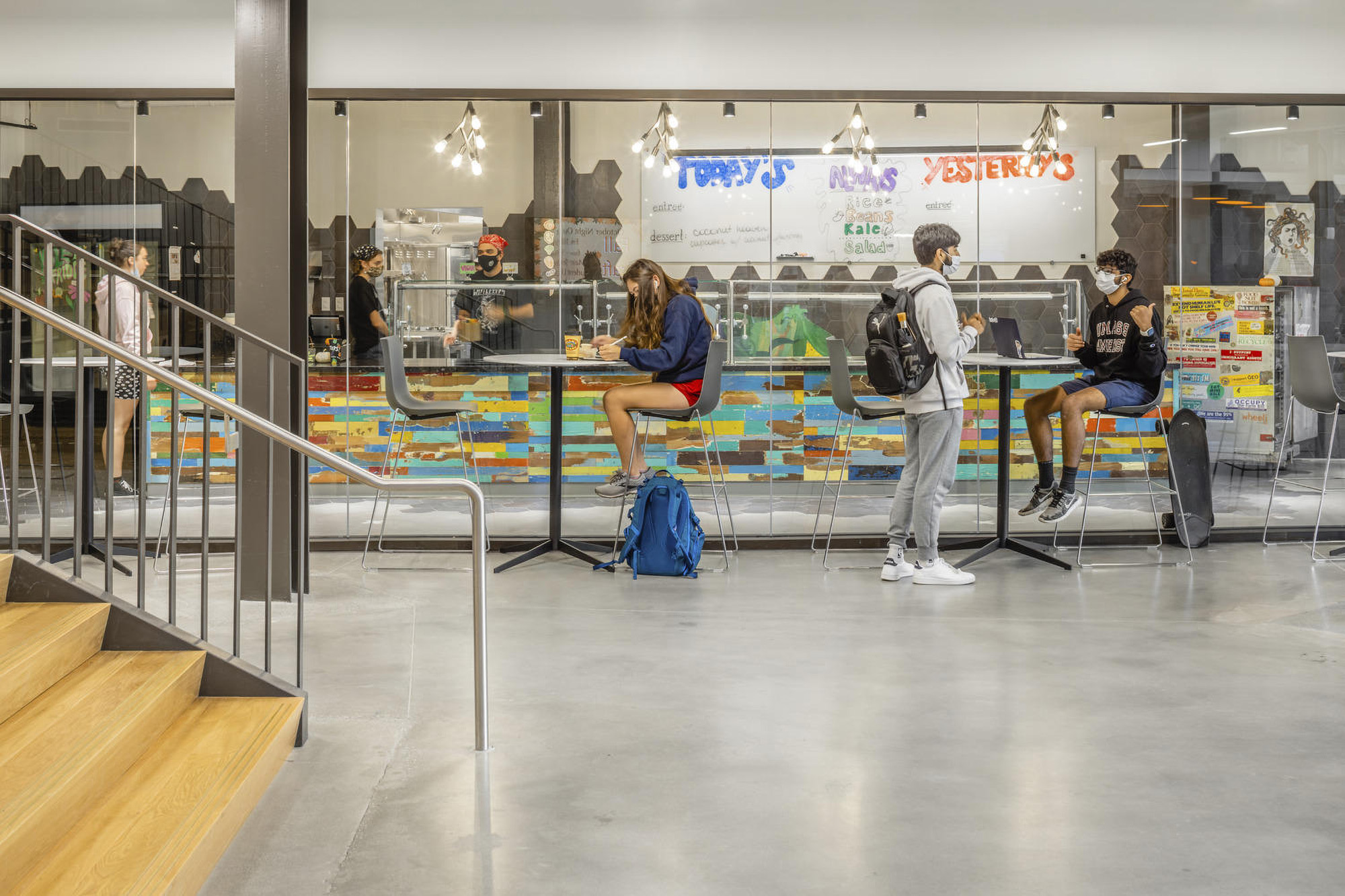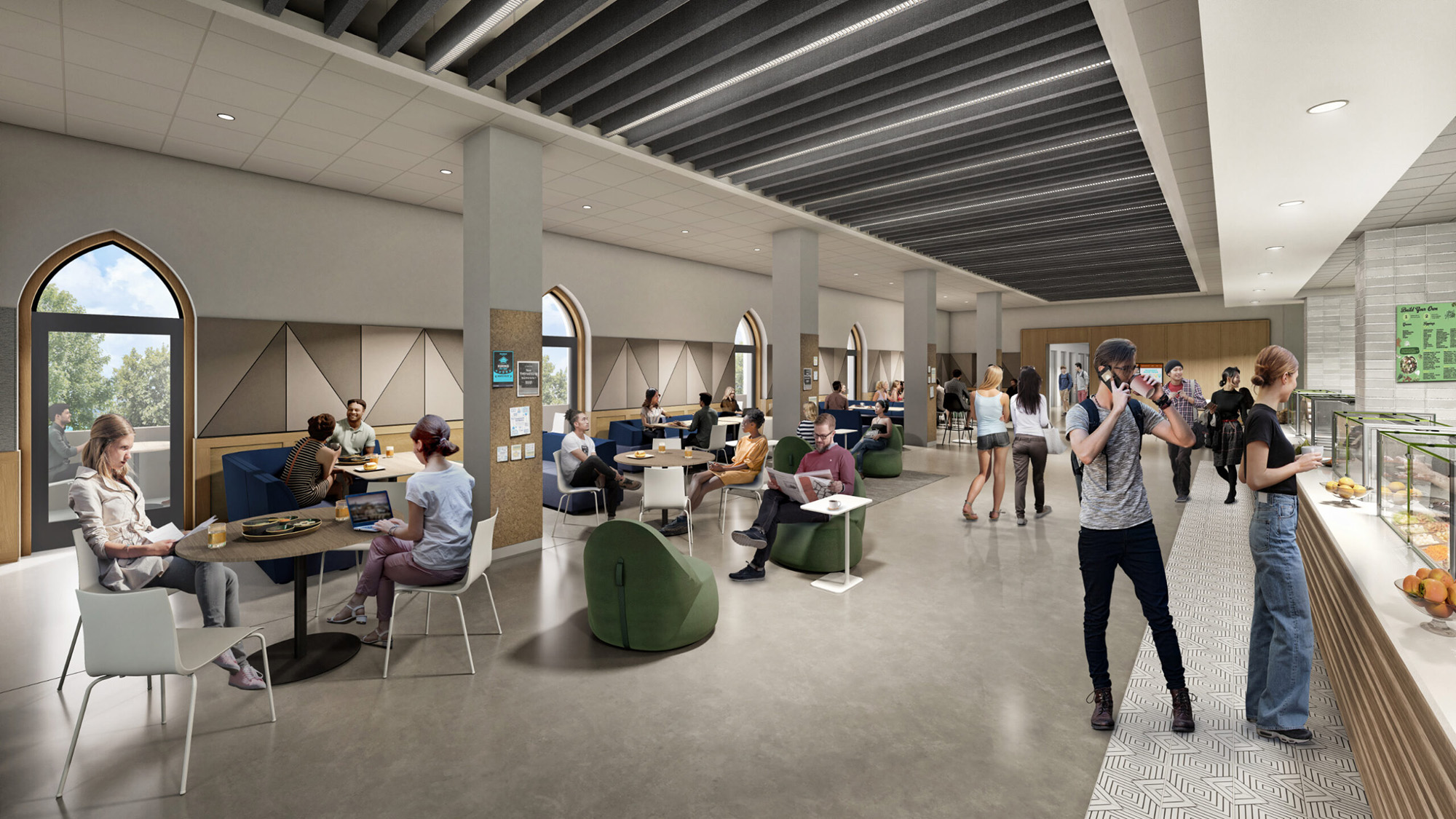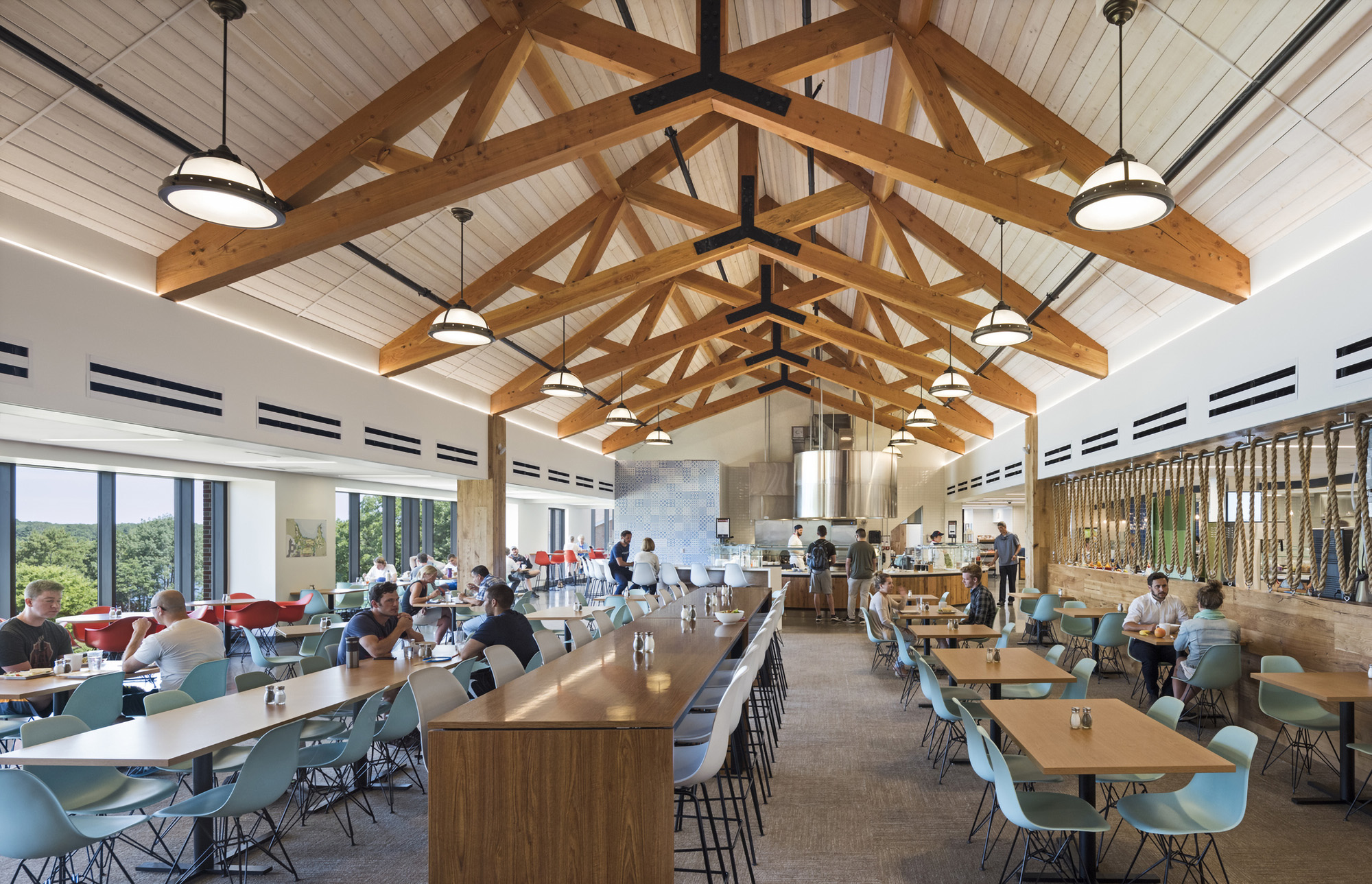3 considerations for designing healthy, adaptable student dining

Every student life project possesses its own unique reflection of the campus in which it resides. Student dining facilities have evolved to match changes in higher education and student life. Modern dining spaces move away from cafeteria-style lines toward a more communal experience with areas for eating, socializing, and supporting campus culture.
There is also an increase in diverse dining models like grab-and-go, mobile ordering, a la carte menus, residence hall cooking facilities, off-campus meal plans, and retail options.
A central focus is providing nutritious food options, including locally sourced items and accommodating dietary needs. Studies have shown a strong correlation between nutrition and overall student performance.
1. Diverse student populations
Student demographics are becoming more diverse, transforming higher education. By the numbers, both the average age and ethnic diversity of students attending postsecondary school is on the rise. Attendance among multiracial students has increased 185% since 2010, and female enrollment continues to surpass male enrollment.
As of 2020, one in three students identified as first generation students in their families. Concurrently, 60% of college students show symptoms of a mental health condition, and eight in 10 students reported feelings of significant stress or anxiety.
These factors emphasize the importance of holistic wellness, and the role that connections to community and culture play to bolster a sense of belonging. In our work across the country, we hear students increasingly demand that wellness is woven into daily campus life. And as more diversity on campus brings more people to colleges and universities with a variety of life experiences, we have an opportunity to broaden those circles, rather than reinforce those boundaries. Coming together around food is a key driver for community interaction.

2. Access to dining facilities
When designing new dining facilities, movement and transparency often guide the layout to establish the right program and service distribution. Beyond existing service models, new programmatic thinking allows the dining venue to seamlessly integrate into the building.
A building’s location on campus can also help inform the program. At Lehigh University, the iconic and historic Clayton University Center in the middle of campus is currently under construction as the school’s new state-of-the-art center for campus life that will truly fulfill and serve its purpose as the heartbeat and crossroads of the community. A major interior renovation of the 1868 building is helping the university create a transformational dining and student life experience with vibrant, welcoming space for community gatherings and discussion.
The renovated design amplifies the iconic facade while also updating it to create more inviting points of entry around the building. This increased porosity will intuitively bring students, faculty, and staff into and through the building from multiple directions, and with greater accessibility.
An updated dining program will serve as a cornerstone of the new building experience at Lehigh University, which includes premium dining amenities with food concepts and offerings new to the campus, from allergen-free to kosher to vegan to the Amazon-powered “Just Walk Out” retail and breakfast–all-day concepts. The seamless addition of technology will feature a mobile ordering system to reduce lines while providing ample seating for dining in.

3. Equitable student dining access
A building’s location can influence more than just the dining program. At one new student center on a campus edge, our collective goal is to engage the campus and community through equitable food access.
Various dining platforms are accessed through a food hall set-up. The platforms could rotate seasonally or annually to provide a diverse range of culinary options. In addition to the food hall model, a flexible café space transitions from grab-and-go coffee to dine-in service. To-go service was prioritized to allow individuals to bring food anywhere in the building. A variety of spaces and seating options where people can gather and enjoy their meals allows for more personalized and comfortable dining experiences.
Both the food hall and cafe will accept meal plans, points, or cash. This flexibility in payment options was paramount to ensuring equitable food service across populations, effectively lifting the barrier to entry from a traditional all-you-care-to-eat model. It also enabled the university to open the dining hall to the broader community, anchoring the new student center—which is currently under construction—as a welcoming gateway between the campus and the community.
Student dining programs, like housing and academic programs, are an integral part of the student experience and should provide a safe, accommodating, and inspiring environment. With attention to this variety, dining can become a cultural center for campus life that deepens connections, increases engagement, and fosters a greater sense of belonging.
The post "3 considerations for designing healthy, adaptable student dining" appeared first on Building Design & Construction

